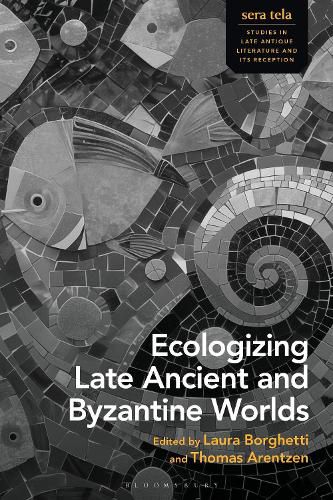Readings Newsletter
Become a Readings Member to make your shopping experience even easier.
Sign in or sign up for free!
You’re not far away from qualifying for FREE standard shipping within Australia
You’ve qualified for FREE standard shipping within Australia
The cart is loading…






This volume explores late ancient and Byzantine media from an ecological view point and with a special focus on non-human agencies. How are such agencies entangled in the human elements - whether in the human media itself or the human characters of literary texts? How were these media once weathered by concrete ancient elements, and how can we re-expose them - to the weather of ecological readings? To what degree do these media imply the agency of landscapes, plants, animals, and other natural phenomena? To what degree do they comprise literary exploitations of other species?
By applying an interdisciplinary approach that merges the fields of literature, history, and religious studies in the service of ecocriticism, the chapters highlight diverse ways in which premodern writers engaged with the non-human world. The integration of ecological perspectives into late ancient and Byzantine studies is a remarkably recent development. This book pioneers the interweaving of late ancient and Byzantine studies with ecocriticism. From the ancient treatises on dreams to monastic tales, from the Hexameron literature to the Byzantine romance, from the Exeter Book to a mysterious Byzantine icon, the book investigates a diverse range of media to uncover the intricacies of relationships in the natural world. It illustrates how these media are not only repositories of cultural and intellectual history but also valuable chests of ecological awareness, by overcoming the binary antinomy of culture and nature, human and non-human.
$9.00 standard shipping within Australia
FREE standard shipping within Australia for orders over $100.00
Express & International shipping calculated at checkout
This volume explores late ancient and Byzantine media from an ecological view point and with a special focus on non-human agencies. How are such agencies entangled in the human elements - whether in the human media itself or the human characters of literary texts? How were these media once weathered by concrete ancient elements, and how can we re-expose them - to the weather of ecological readings? To what degree do these media imply the agency of landscapes, plants, animals, and other natural phenomena? To what degree do they comprise literary exploitations of other species?
By applying an interdisciplinary approach that merges the fields of literature, history, and religious studies in the service of ecocriticism, the chapters highlight diverse ways in which premodern writers engaged with the non-human world. The integration of ecological perspectives into late ancient and Byzantine studies is a remarkably recent development. This book pioneers the interweaving of late ancient and Byzantine studies with ecocriticism. From the ancient treatises on dreams to monastic tales, from the Hexameron literature to the Byzantine romance, from the Exeter Book to a mysterious Byzantine icon, the book investigates a diverse range of media to uncover the intricacies of relationships in the natural world. It illustrates how these media are not only repositories of cultural and intellectual history but also valuable chests of ecological awareness, by overcoming the binary antinomy of culture and nature, human and non-human.